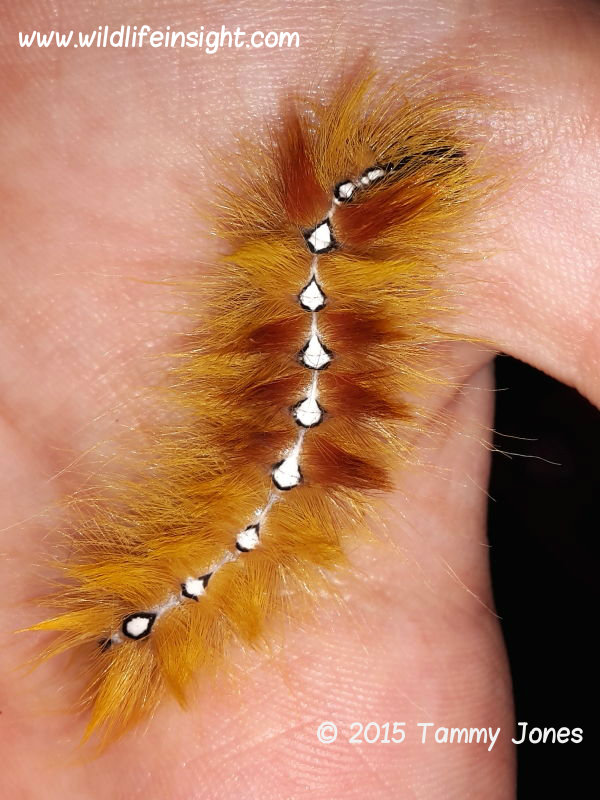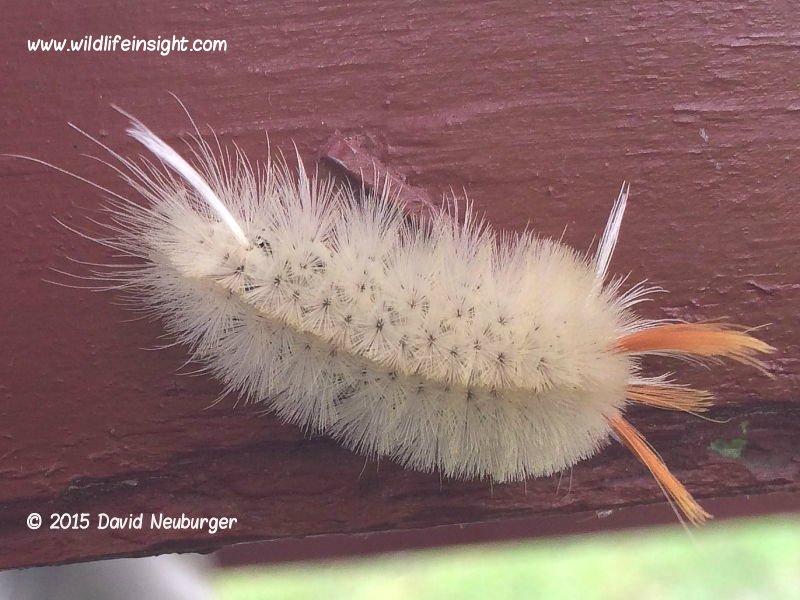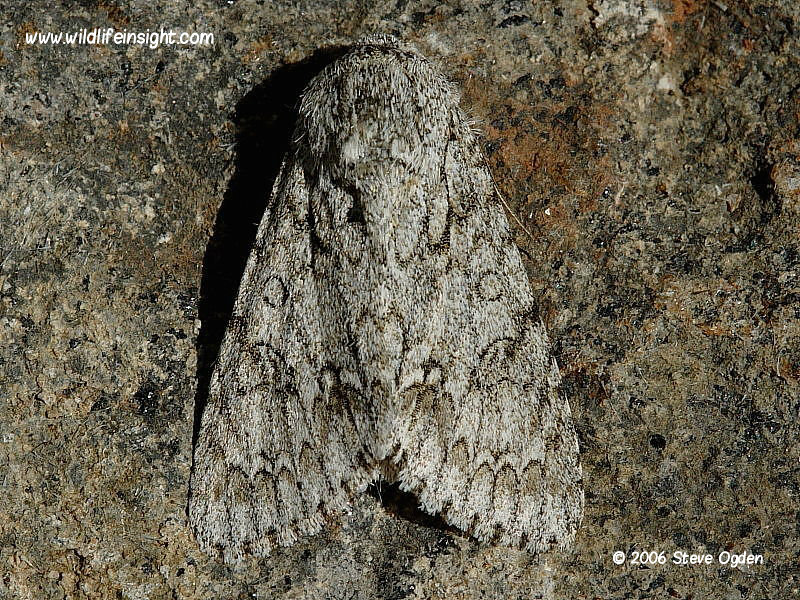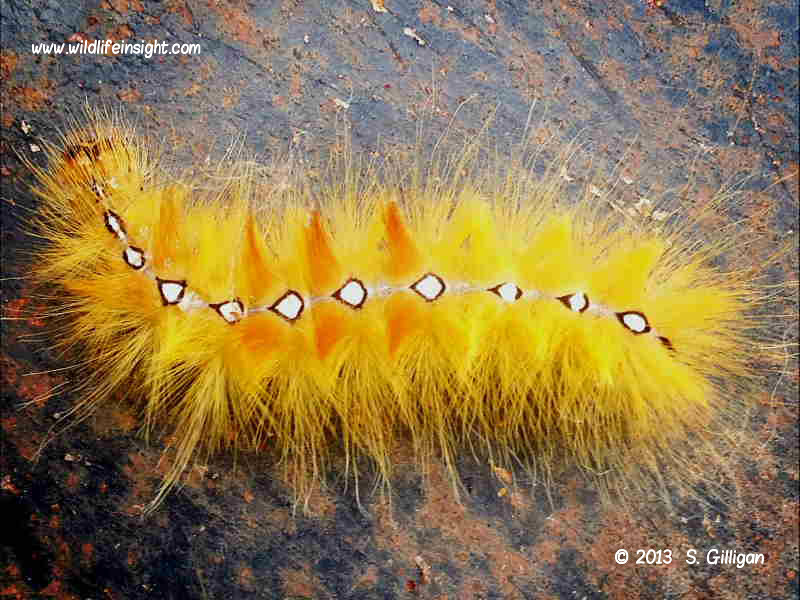Sycamore moth Actronicta aceris
The Sycamore moth is found locally in the southern half of the British Isles, less commonly in the south west and is absent from large parts of Cornwall.
2021 update – In recent years its range has been spreading further north and westwards into Wales. Some of the caterpillar sightings featured below reflect this range expansion.
The adult moth is single brooded and flies between June and August when it is attracted to light in small numbers.
Wing length is approximately 20mm.
Eggs are laid on the larval foodplant of Sycamore and other deciduous trees.
The distinctive fully grown hairy caterpillars shown below overwinter in cocoons constructed amongst bark and leaf litter.
Information on The Sycamore Tussock moth Halysidota harrisii found in North America can be see below.
Other Acronictinae, Dagger species
Other commonly found ‘Dagger’ species (Acronictinae) in the British Isles and many parts of Europe include The Dark Dagger, The Grey Dagger, The Alder Moth, The Poplar Grey, The Miller and The Coronet.
Recommended Moth reference books
The Colour Identification Guide to the Caterpillars of the British Isles by Jim Porter,
The Moths of Great Britain and Ireland Waring,Townsend and Lewington,
The Provisional Atlas of the UK’s larger moths by Butterfly Conservation.
The Caterpillars of Eastern North American by David I. Wagner
The Sycamore moth caterpillar Actronicta aceris

What the Sycamore moth lacks in appearance the caterpillar certainly makes up for.
It is one of the most distinctive caterpillars to be found in the British Isles and much of Europe.
It has bold white dorsal spots highlighted in black set amongst a thick coat consisting of a variable mix of yellow, brown and orange coloured hairs.
The fully grown caterpillar grows up to 40mm in length and feeds on a variety of deciduous trees including sycamore and maples.
The fully grown, brightly coloured, hairy caterpillars are commonly seen in late summer and early Autumn when they leave the trees to wander in search of somewhere to pupate.
They are well known for dropping out of trees and on occasions landing on walkers.
The females lay eggs on the leaves of the larval food plant.
Photos of The Sycamore Tussock moth caterpillar found in parts of North America are shown below.
Other caterpillars can be seen in the caterpillar galleries and also Hairy caterpillars
Help with caterpillar identifications.
The Sycamore moth caterpillar
The Sycamore Tussock moth caterpillar Halysidota harrisii
The North American Sycamore Tussock moth caterpillar found throughout many states in the USA and Canada is unlikely to be confused with the Sycamore Moth caterpillar found in the British Isles and parts of Europe.
The caterpillars are frequently found in urban and rural areas where the larval foodplant of Sycamore and London Plane trees occur.
There are two generations and the fully grown caterpillars are frequently sighted wandering in search of places to pupate.
The second generation overwinters as a cocoon.
Colour is variable and as with all hairy caterpillars care should be taken if handling as the hairs may cause irritation to the skin.


